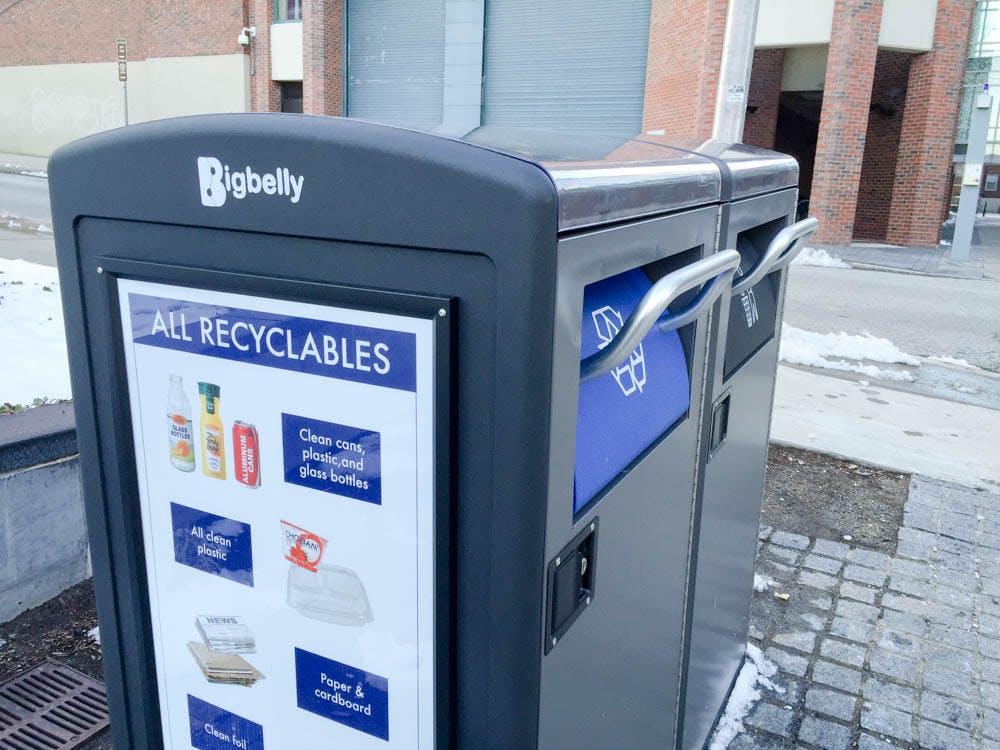Over spring break, the Department of Facilities Management updated how people on campus can get rid of their trash, installing 60 new BigBelly solar compactors across campus, said Grounds Superintendent Patrick Vetere.
With traditional trash cans or recycling bins, the grounds crew responsible for picking up trash must regularly check bins to see if they are full, said Jessica Berry, sustainability program manager. The compactors, equipped with sensors, eliminate this inefficient step by sending signals to the grounds crew as soon as they can be emptied.
Thirty of the 60 new compactors are designated for recyclable materials and 30 are for trash, Vetere said. In addition, 10 existing solar compactors were upgraded, he added.
The 70 compactors will replace 117 trash and recycling bins, said Vice President for Facilities Management Stephen Maiorisi.
Replacing multiple bins with one compactor will make recycling simpler, increasing recycling rates, Maiorisi said.
The addition of more compactors means the University is now 100 percent single-stream recycling, Vetere said. In other words, it is no longer necessary to figure out which bin a recyclable should go in.
“The new single-stream system is much more efficient for students,” said Loren Dowd ’16, a former design editor for The Herald who worked on the project as a communications intern with the Office of Energy and Environment. “They no longer have to figure out which recyclables go in the ‘mixed containers’ bin and which go in the ‘paper’ bin.”
The new trash compactors must be physically opened, adding one step to the process of disposing of waste.
“While opening the trash cans is one additional step, the hope is that by having students actively take part in throwing away their trash or recycling, they’ll have to stop and mentally register what they’re doing,” Dowd said. “I am sure there will be students who don’t like having to open the bins, but it’s only a small change.”
Dowd created posters that help decipher what to recycle and what to put in the trash, she said. They will also “call attention to the new bins and system,” she added.
The extra step of opening the bins has other benefits, too. For example, there will no longer be overflowing barrels or rodent problems, Vetere said.
The new compactors are also an aesthetically pleasing addition to campus, Maiorisi said, noting that he has had his eye on the compactors for some time now. “Every time I would go anywhere I would take a picture and send it to (Berry) and say, ‘We should do this,’” he said.
The University leased the compactors for a total price tag of $66,000 a year, Maiorisi said. Seventy-five percent of that sum has already been recouped through efficiencies, and Maiorisi estimates that all of the costs will be recovered in the long term, he said.





